
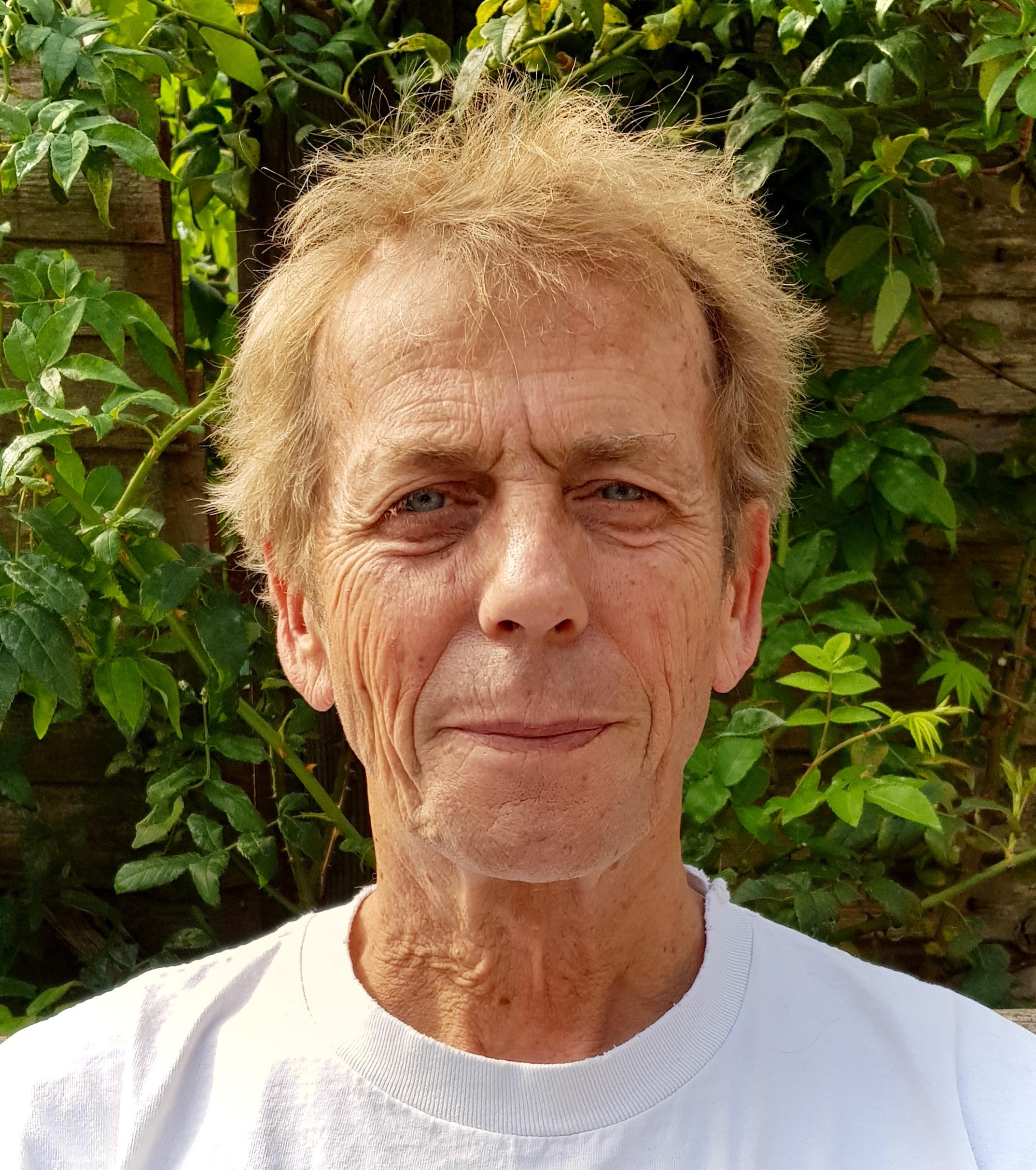
For this DJI Mini 2 vs DJI Mavic Air 2 comparison, I'll be taking a closer look at how these two compact camera drones match up.
When it comes to consumer drones, Shenzhen-based DJI (Da-Jiang Innovations) is well ahead of the curve. This brand has long dominated T3's best drone ranking. Mind, that's hardly surprising given the world-conquering technology company's long stint in the drone industry. The company now has a small fleet of drones, and two of the smallest and most affordable are the Mini 2 and Mavic Air 2. You can read about them both separately in our DJI Mini 2 review and our DJI Mavic Air 2 review.
Note: there are newer versions of both of these drones. The DJI Mini 3 Pro drone hit the market in May 2022, joining the Mini 2 in DJI's compact drone lineup as a professionally-skewed option. The Mavic Air 2 is actually no longer in production, having been replaced in November 2021 by the much pricier and more pro-level Mavic 3 drone. At time of checking you could still buy it via third party retailers.
Back to the two drones in question though. The Mavic Air 2 is the higher-specced of the two, but it's also much pricier. Although the Mini 2 isn't cheap enough to be included in T3's best cheap drone roundup, it's definitely at the affordable end of DJI's lineup. If you want to throw another alternative into the mix, head to our three-way Autel Evo Nano vs DJI Mini 2 vs DJI Mavic Air 2 shoot-out. But for now read on for my DJI Mini 2 vs DJI Mavic Air 2 comparison.
DJI Mini vs DJI Mavic Air 2: size and weight
When it comes to choosing a drone, size and weight really does matter, and not just for ease of transport. Thankfully, all of the Mavic models in DJI's current roster are eminently portable, partly because they all fold down into tidy packages. However, I can tell you from first-hand experience that the smaller, more compact the drone, the more likely you are to take it with you. This is simple physics really and a constant conundrum among land-based photographers.
Example: you’re off to the beach for the day, so do you take your full DSLR kit and three lenses with you just in case there’s a telephoto or close-up photo opportunity? Or do you take your favourite compact camera for ease of transit? The answer is you take neither because you take your phone instead. After all, your phone takes great photos and it’s already in your pocket. The same thing applies to drones.
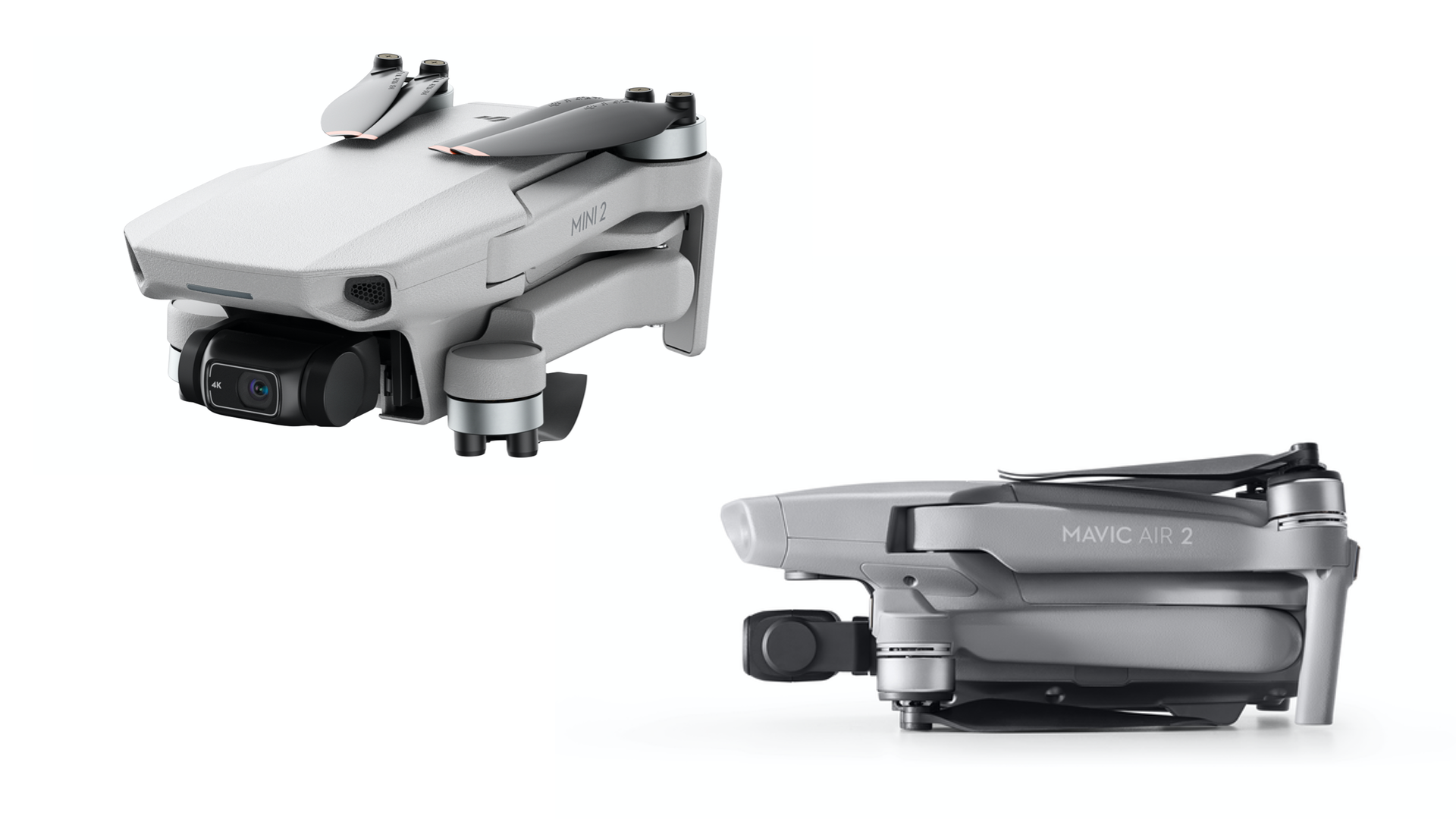
Mini 2 and Mavic Air 2 in folded form
While still considered small, the Mavic Air 2 when folded (18×9.7×8.4cm) is significantly bigger than the Mini 2 (14×8.2×5.7cm) and that’s something worth considering if you’re going on a hike or climbing a mountain. The Mini 2’s smaller size is also less likely to attract attention because, well, it’s so small hardly anyone will see it – even though they may hear it.
Sign up to the T3 newsletter for smarter living straight to your inbox
Get all the latest news, reviews, deals and buying guides on gorgeous tech, home and active products from the T3 experts
Size is one thing but in this comparison it’s weight that makes the biggest difference of all. At 570g, the Mavic Air 2 weighs significantly more than the Mini 2, which clocks in at just shy of 249g. Granted, a 321g difference is hardly the end of the world but there’s a very valid reason why the Mini 2 weighs so little and that’s because, in 2019, the UK’s CAA (Civil Aviation Authority) and the USA’s FAA (Federal Aviation Administration) introduced a drone licensing system that involved taking an online test and paying a small fee for a pilot ID. And guess what, the weight at which registration was required was for drones from 250g and upwards.
This naturally led to an explosion in DJI Mini sales so, in predictable fashion, the CAA and FAA decided to move the goalposts and, as of 31 December 2020, all camera-carrying drones below 250g will now require registration. However, the good news is that prospective Mini pilots do not need to sit the newly-elongated online multiple-choice exam. All they need to do is pay £9 for the registration. Granted, it’s not what current DJI Mini pilots expected but, hey, that’s life. (Read more about the UK drone regulations or US drone rules.)
Winner: Mini 2
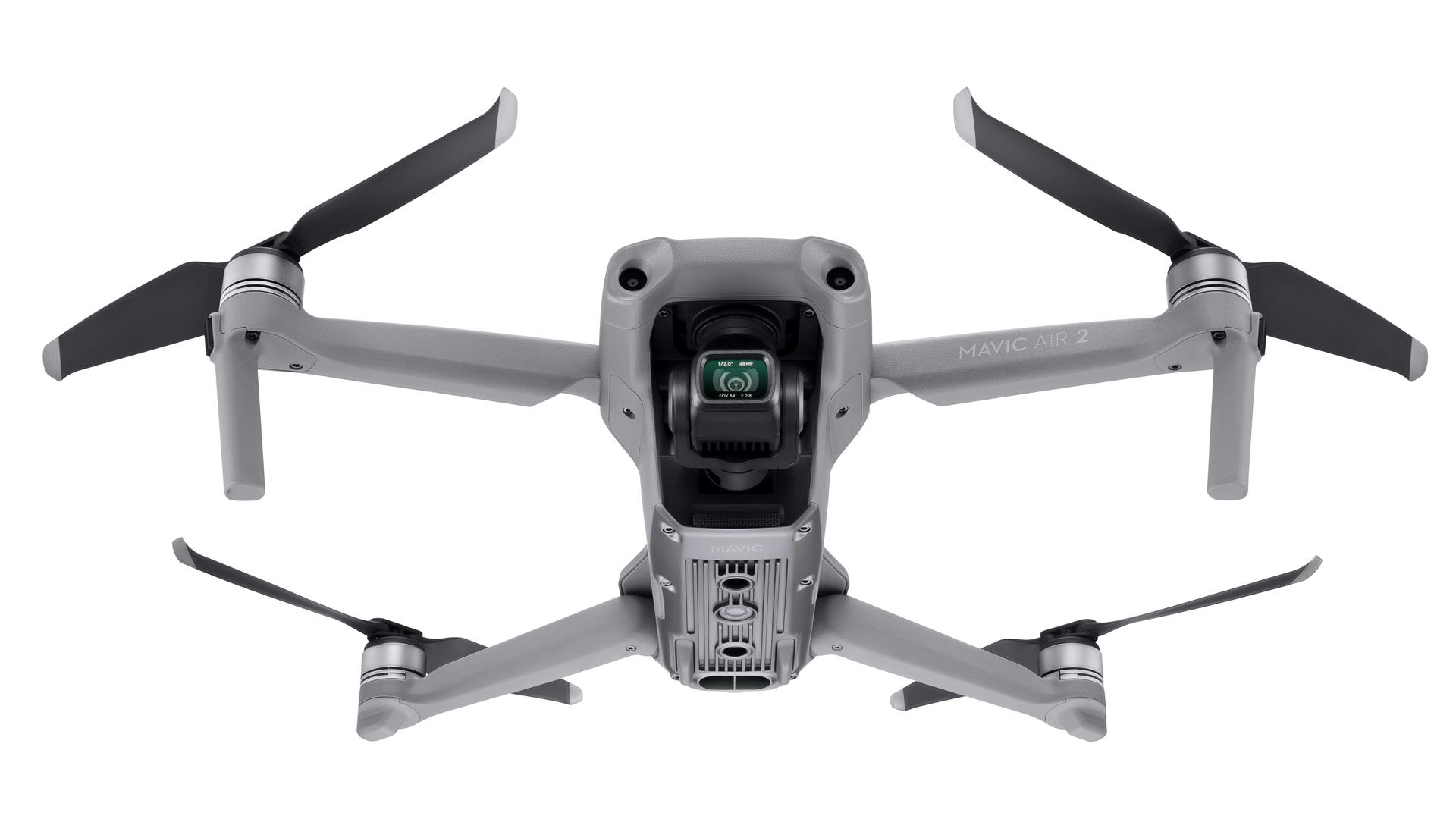
The Mavic Air 2 is equipped with obstacle sensors for safer flying
DJI Mini vs DJI Mavic Air 2: design and features
The Mini and Mavic Air 2 look very similar in shape and design. Aside from the Mavic Air 2’s larger size, slightly more angular body, beefier camera and darker colour scheme, there isn’t any noteworthy difference between the two. After all, they are both from the same Mavic family (DJI may have dropped the ‘Mavic’ moniker from the Mini 2 but it’s still essentially a Mavic).
Indeed the main difference both externally and internally is that the Mavic Air 2 is equipped with fore, aft and downward facing obstacle avoidance sensors and the Mini 2 doesn’t have any obstacle avoidance technology at all, apart from ground sensors for landing. For some pilots, obstacle avoidance is a significant addition. It means you can program the Mavic Air 2 to follow you through heavy foliage and other obstacle-strewn areas using the ActiveTrack ‘follow me’ mode and the drone will navigate itself around the hurdles entirely on its own. When controlled by the pilot, it will also refuse to fly into a wall or people even if you accidentally steer the drone in that direction. This is a brilliant safety feature, especially when used manually, but it isn’t really required if common sense prevails.
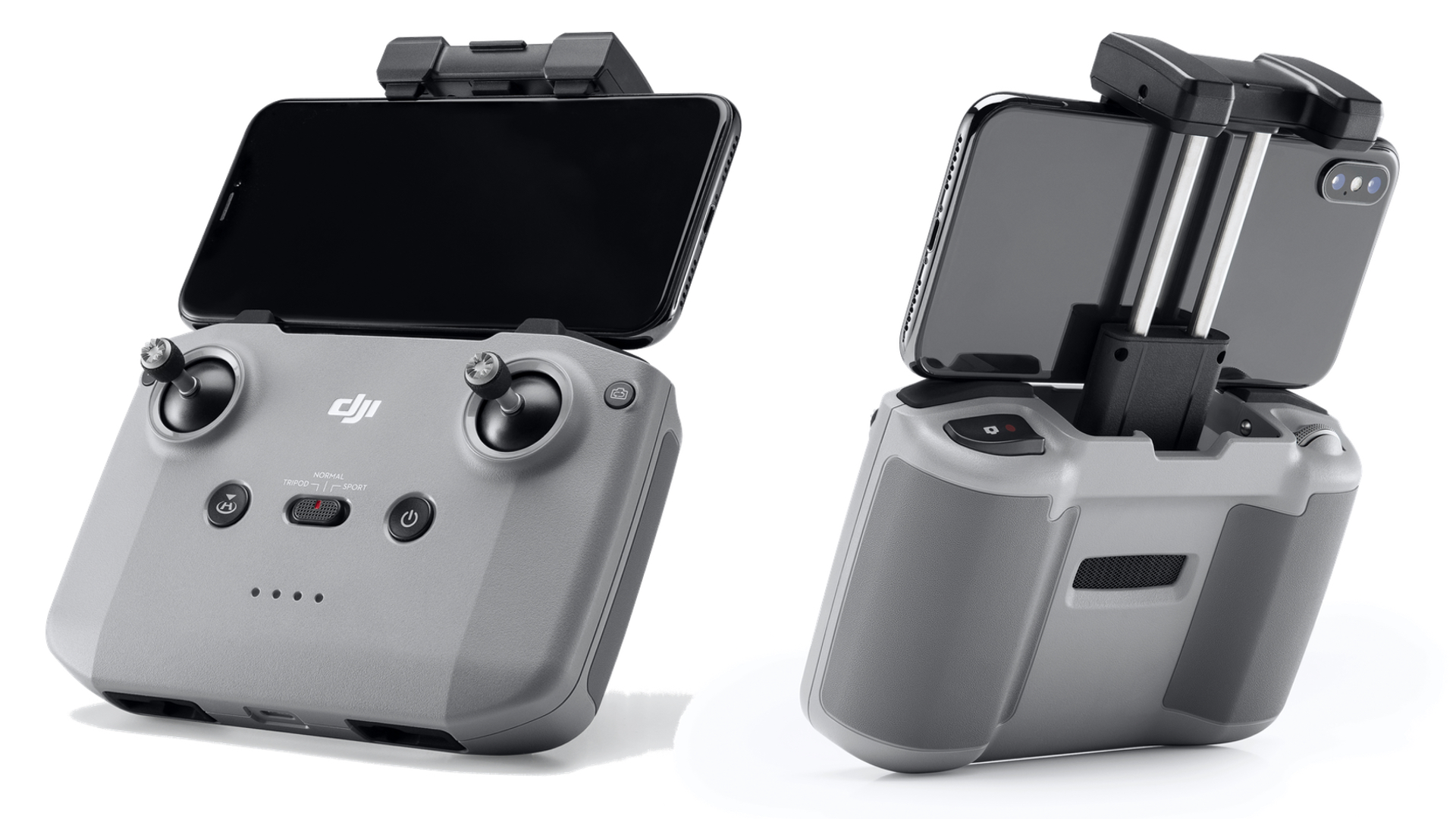
Hand controller for both the Mini 2 and Mavic Air 2
You’ll be pleased to know that both drones use the same type of hand controller which comprises a spring-loaded phone cradle, a centre switch for Tripod/Cine mode (for slow-mo flying), Normal and Sport, buttons for ‘return to home’ and switching between photo and video and, on the shoulders, a shutter control button and gimbal pitch roller.
Winner: Mavic Air 2
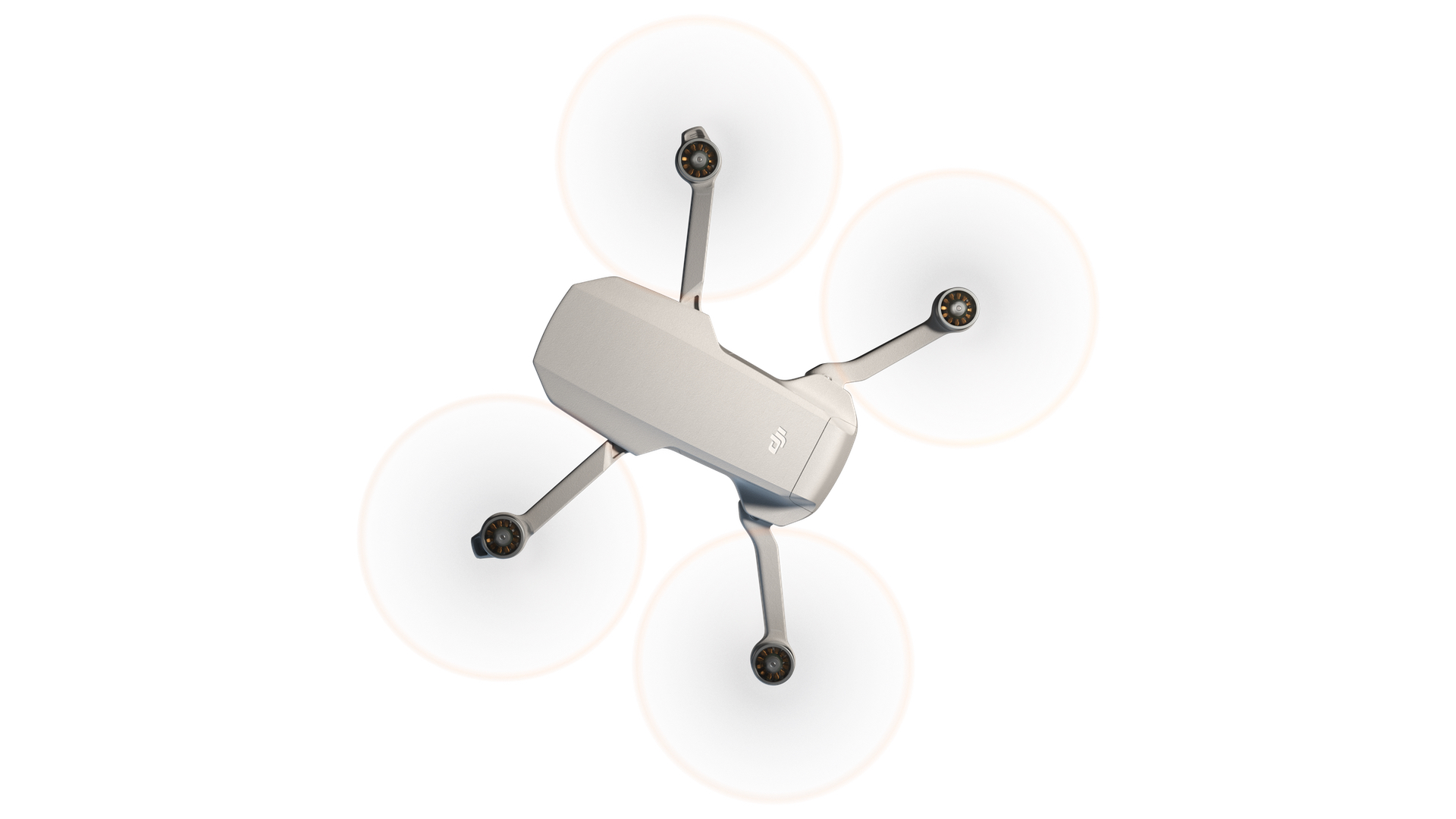
DJI Mini 2
DJI Mini vs DJI Mavic Air 2: flight performance
Had this comparison been between the Mavic Air 2 and the Mini 2’s predecessor, the Air 2 would have walked it. But that’s all changed with the Mini 2’s new Level 5 wind resistance classification and vastly improved video transmission distance. Hence, both drones can be flown in winds up to 10.5 m/s (23mph) and both drones are equipped with DJI’s OcuSync 2.0 which provides rocksteady video transmission to a distance of up to 10km (users should be aware that flying any drone beyond line of sight is illegal).
In terms of top speed in ‘Sports’ mode, the Mavic Air 2 clocks in at 42.5mph and the Mini 2 at 36mph. That’s not a difference worth bothering about but it does mean the Mini 2 is now much better equipped to return in a head wind than the model before it.
When tested using a fully charged battery, the Mavic Air 2 and Mini 2’s flight times are quite similar though the Air 2’s 34 minutes is slightly better than the Mini 2’s 31 minutes. Yes, those extra three minutes could prove useful but you will probably find that you very rarely fly your drone for anything like that period of time. In fact, most of the time you’ll be flying in 10- to 15-minute increments simply because concentration and an element of apprehension when flying drones can be quite tiring.
It's fair to say that both drones handle equally well in the air – they are both rock solid in GPS hover mode and are equally easy to control. The result?
Winner: draw
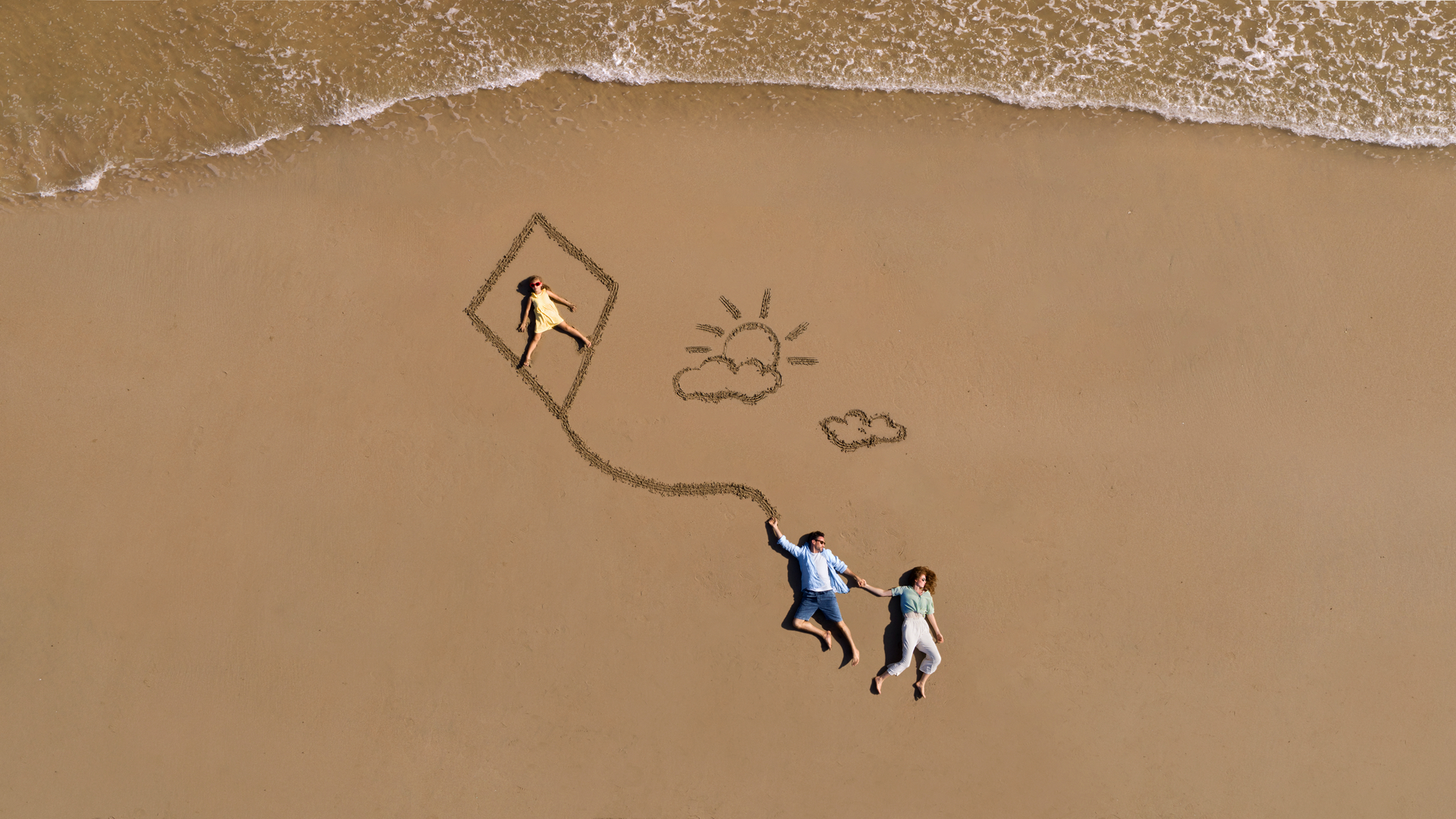
Both drones are capable of producing brilliant aerial photos – this one was taken by the little Mini 2
DJI Mini vs DJI Mavic Air 2: camera performance
Aside from the fun they provide, the sole reason consumer drones have become so popular is because they’re capable of capturing truly exceptional aerial video footage and strikingly impressive images. Indeed, before camera-equipped drones came along, you would have needed to hire a helicopter at massive expense to take aerial shots of your house or some fantastic geographical scene. Hence, camera performance should always be the first consideration when choosing a drone for cinematography purposes and this is where the Mavic Air 2 excels over the Mini 2 – but not by a massive amount.
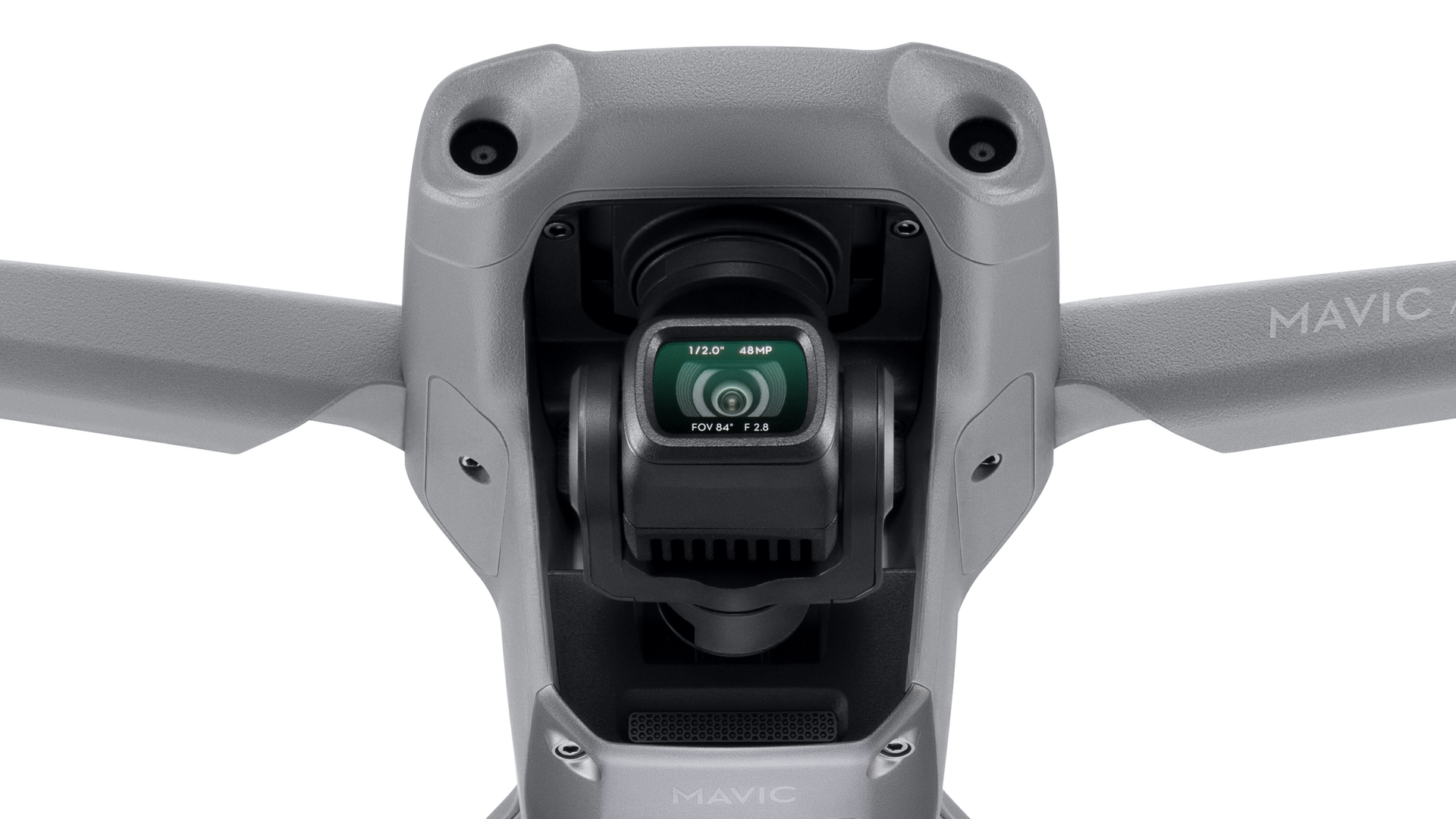
The Mavic Air 2 camera's half-inch CMOS sensor makes this drone the better option for high-end photography and videography
The Mavic Air 2’s camera is fitted with a half-inch CMOS sensor with effective pixels of 12MP and 48MP (JPEG and RAW) and that means it’s good in low light conditions while producing marginally sharper, larger file sizes. Its video resolution ranges from 4K and 2.7K at up to 60 frames per second, 1080p at up to 240fps and HDR (High Density Range) variations of all three.
By contrast, the Mini 2’s camera comes with a smaller 1/2.3” CMOS sensor with an effective pixel count of 12MP (JPEG and RAW). This is an improvement over the Mini 2’s predecessor since it now allows the camera to shoot video in 4K as well as 2.7K at up to 30 frames per second, 1080p at up to 60fps and stills in DNG RAW for more effective tweaking.
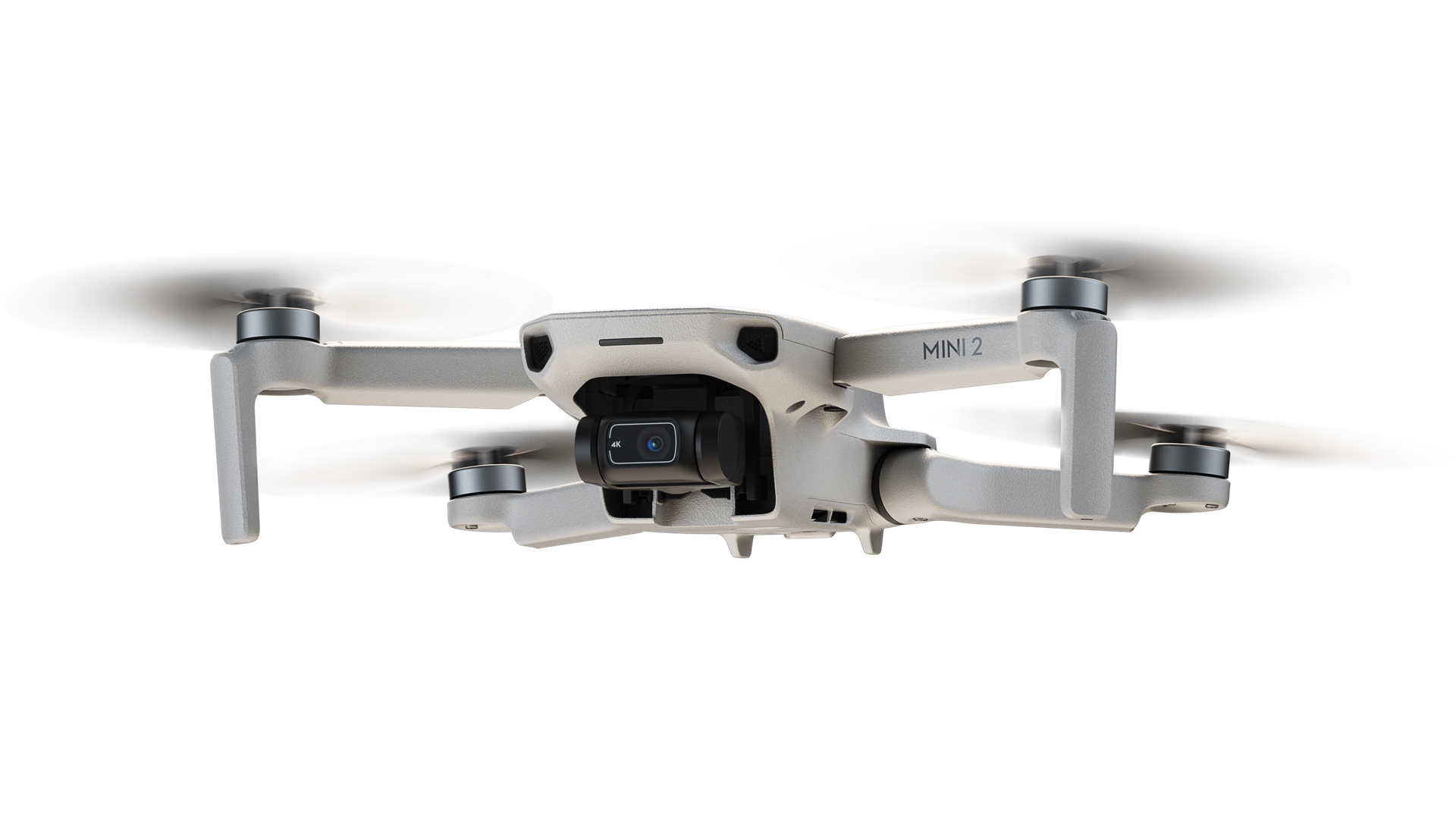
The Mini 2 camera may have a smaller 1/2.3” CMOS-equipped sensor but it's still an excellent performer
As you can see from these stats, the Mavic Air 2 is definitely the better option on paper. However it must be said that when seen on a phone or tablet, there’s very little discernible difference between these drones’ respective footage. However, you will notice a difference when viewed on a large computer screen.
Now before you dismiss the Mini 2 out of hand, perhaps check out some 4K footage on You Tube first and decide for yourself (remember to switch the settings cog on the browser to 4K). We’re sure you’ll agree that the Mini 2’s footage is stupendously sharp and richly detailed and certainly more than good enough for most users’ requirements. Nevertheless, if you’re a professional or budding photographer or videographer for whom only the best quality footage and stills will do, then the Mavic Air 2 should be your bird of choice or, if you can afford it, the even better DJI Mavic 2 Pro which has a whopping one-inch camera sensor.
When it comes to camera profiles, the Mavic Air 2 comes with a D-Cinelike setting which flattens and desaturates the image for more effective post video editing. However, to get the most out of it you will need a decent computer editing package like Final Cut Pro X or Adobe Premiere Pro. By contrast, the Mini 2 doesn’t have any camera profiles at all though the default setting is excellent nonetheless.
The Mini 2 doesn’t have 8GB of internal storage like the Mavic Air 2 though this isn’t a deal breaker (both drones can accept Micro SD cards of at least 128GB). Finally, it should be noted that both drones are equipped with the same 3-axis stabilising gimbal so video is equally smooth and jitter-free.
Winner: Mavic Air 2
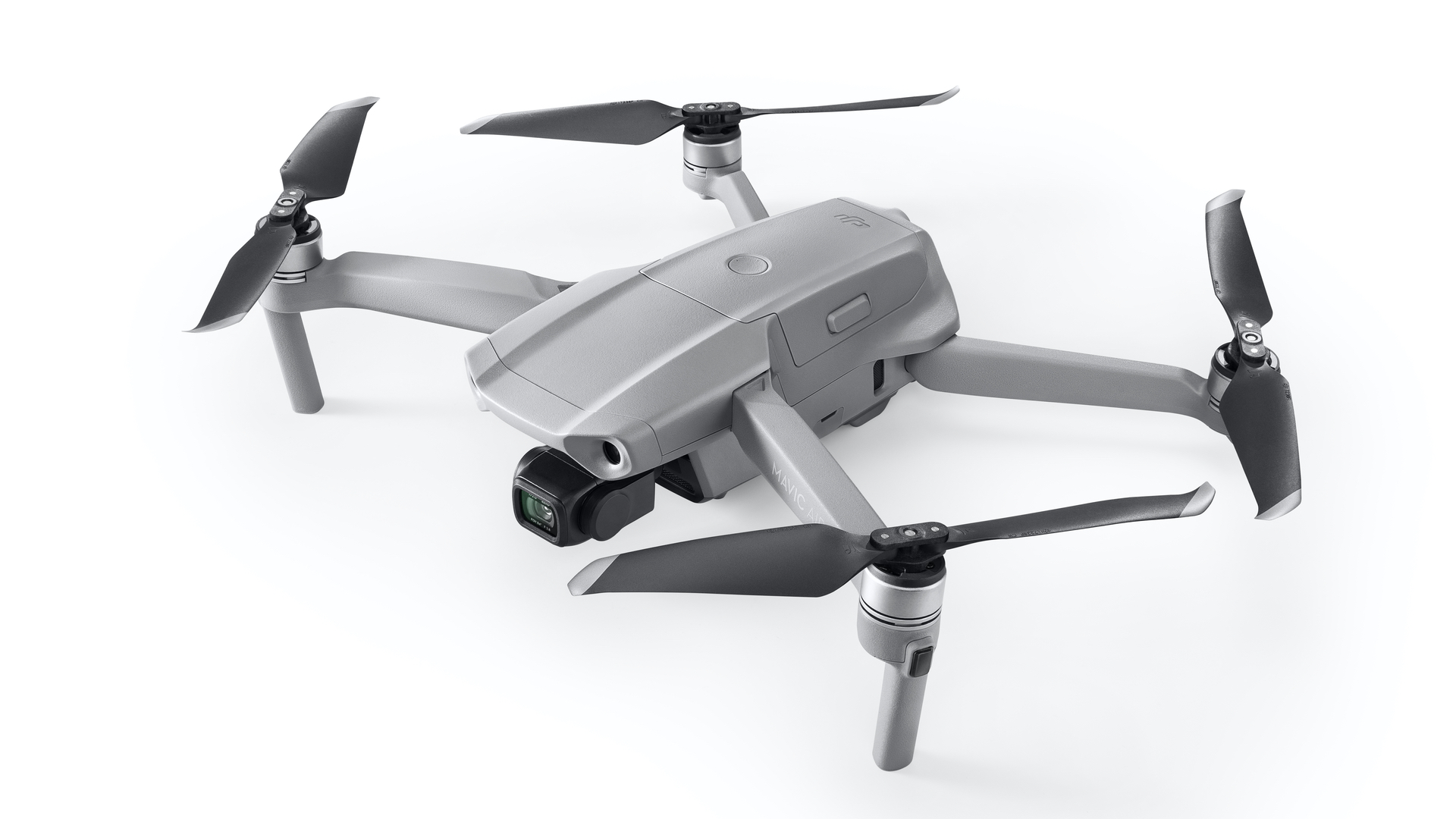
The DJI Mavic Air 2 has built-in tracking ability
DJI Mini vs DJI Mavic Air 2: autonomous modes
If you want your drone to shoot video and stills autonomously then both of these models will do it, though the Mavic Air 2 does have a few extra tricks up its sleeve. Both models are equipped with the following ‘QuickShots’: dronie, helix, rocket, circle and boomerang. Simply select your choice in the accompanying DJI Fly app and the drones will video the selected subject automatically from a range of cinematic angles, with no input from the pilot. Both drones will also shoot panoramas and hyperlapse video stills. However, only the Mavic Air 2 is equipped with Active Track which enables it to automatically follow the user while filming.
Winner: Mavic Air 2
DJI Mini vs DJI Mavic Air 2: Pricing
The basic retail price of the Mavic Air 2 is substantially higher than the Mini 2. That contrast in price can be the difference between tears of rage and mild disappointment when something goes wrong like your drone crashing into a wall or worse, disappearing altogether in a body of water or somewhere over an inhospitable canyon. It’s bad enough losing £400/$350 worth of gear but the pain increases exponentially when £700/$600 worth or more goes AWOL.
DJI Mini vs DJI Mavic Air 2: verdict
Both of these drones are superb in every conceivable way but that won’t help you decide, will it? If you’re a budding cinematographer, photographer or just someone with a keen eye for high-quality imagery who can’t afford the even more expensive DJI Mavic Pro 2, then the Mavic Air 2 is the drone to get. It has a better camera, obstacle avoidance and active track for smooth ’follow me’ shoots. But if you’re likely to be a casual user or someone who plans to travel literally everywhere with a drone, then go for the Mini 2. It’s light as a feather, small as an iPhone, doesn’t require a CAA online exam and yet its camera is easily good enough for most consumer applications. It also happens to be a lot cheaper and therefore a little less precious.
Derek (aka Delbert, Delvis, Delphinium, Delboy etc) specialises in home and outdoor wares, from coffee machines, white appliances and vacs to drones, garden gear and BBQs. He has been writing for more years than anyone can remember, starting at the legendary Time Out magazine – the original, London version – on a typewriter! He now writes for T3 between playing drums with his bandmates in Red Box (redboxmusic).
-
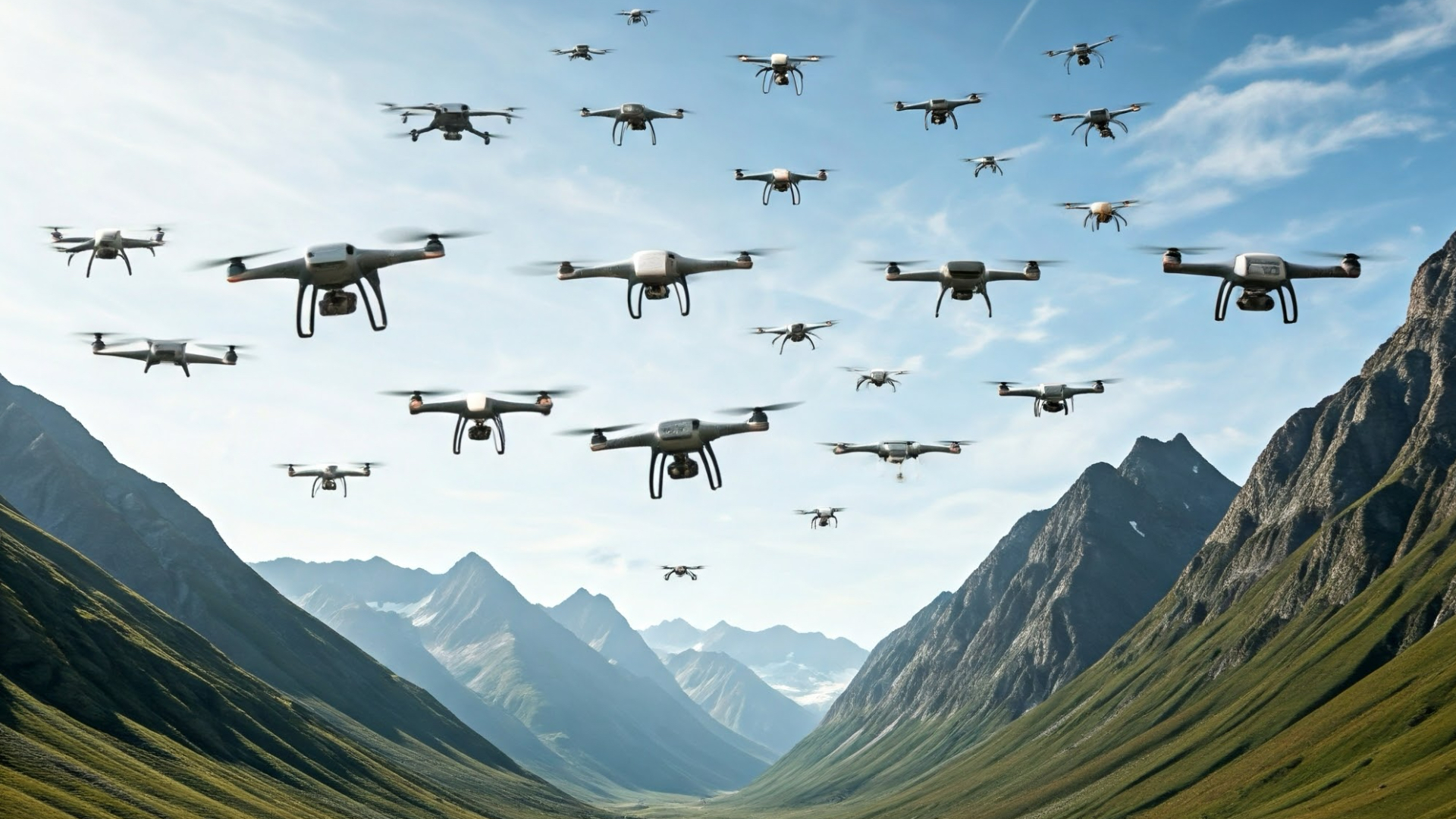 5 drone innovations I’d like to see in 2025 and beyond
5 drone innovations I’d like to see in 2025 and beyondLet's have more colour, longer flight times, modular cameras, drones that float and swarm technology
By Derek Adams Published
-
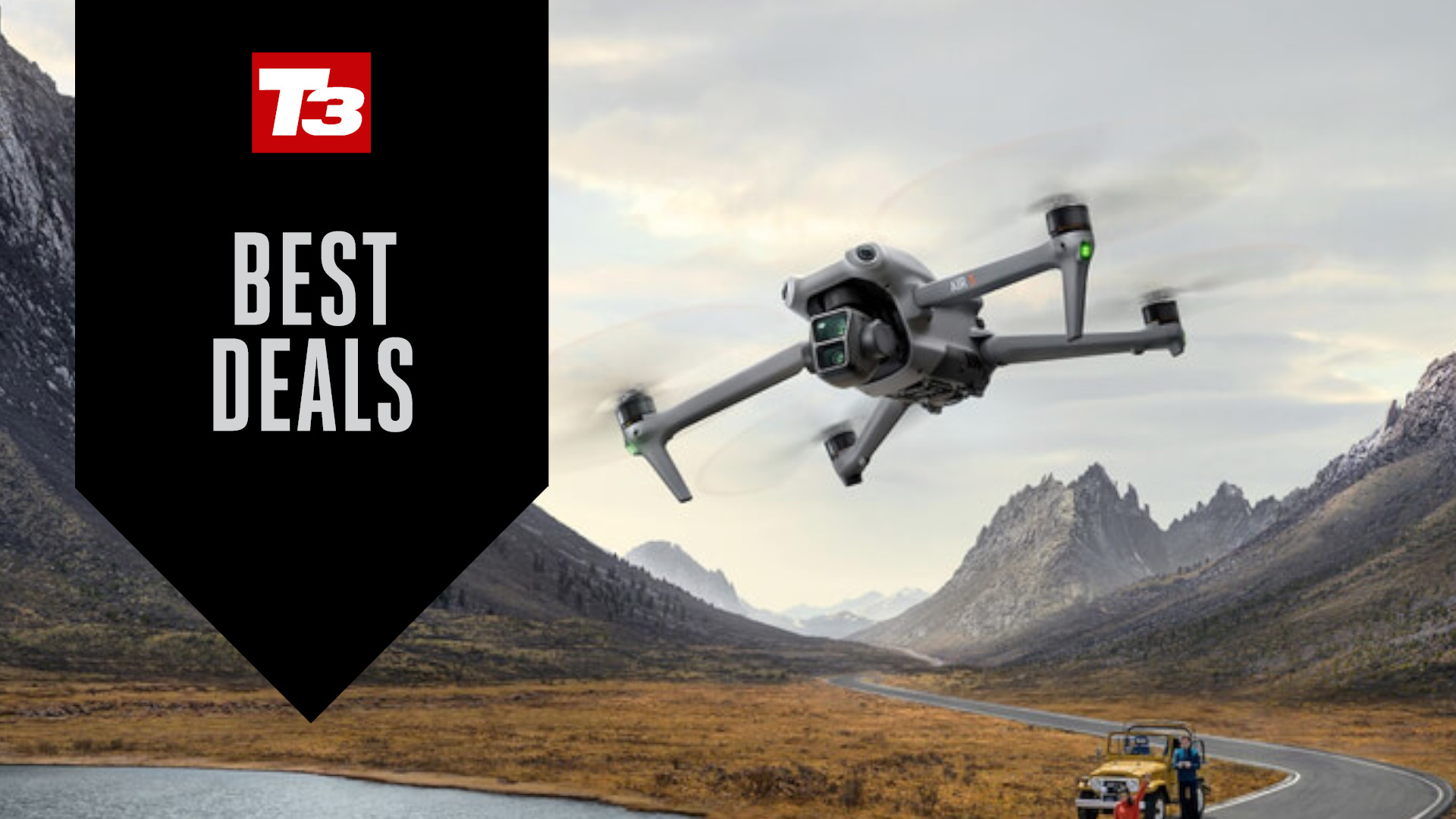 Hurry! DJI’s festive sale has up to 36% off drones, action cameras and more
Hurry! DJI’s festive sale has up to 36% off drones, action cameras and moreChristmas has come early people!
By Bryony Firth-Bernard Published
-
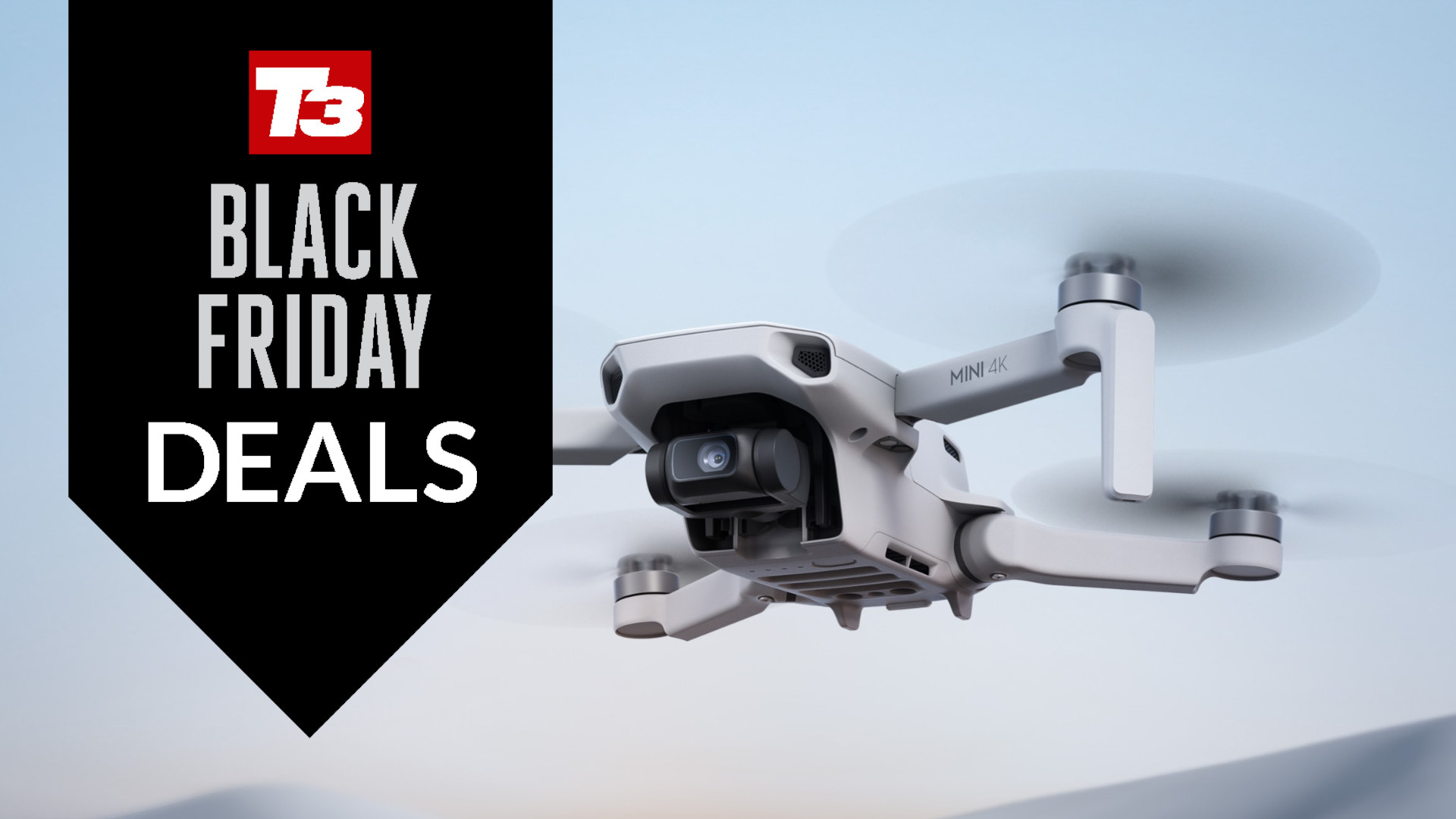 DJI’s best drone for beginner pilots suddenly drops to its lowest-ever price
DJI’s best drone for beginner pilots suddenly drops to its lowest-ever priceThe Mini 4K is less than $250 — don't let this amazing deal slip away!
By Bryony Firth-Bernard Published
-
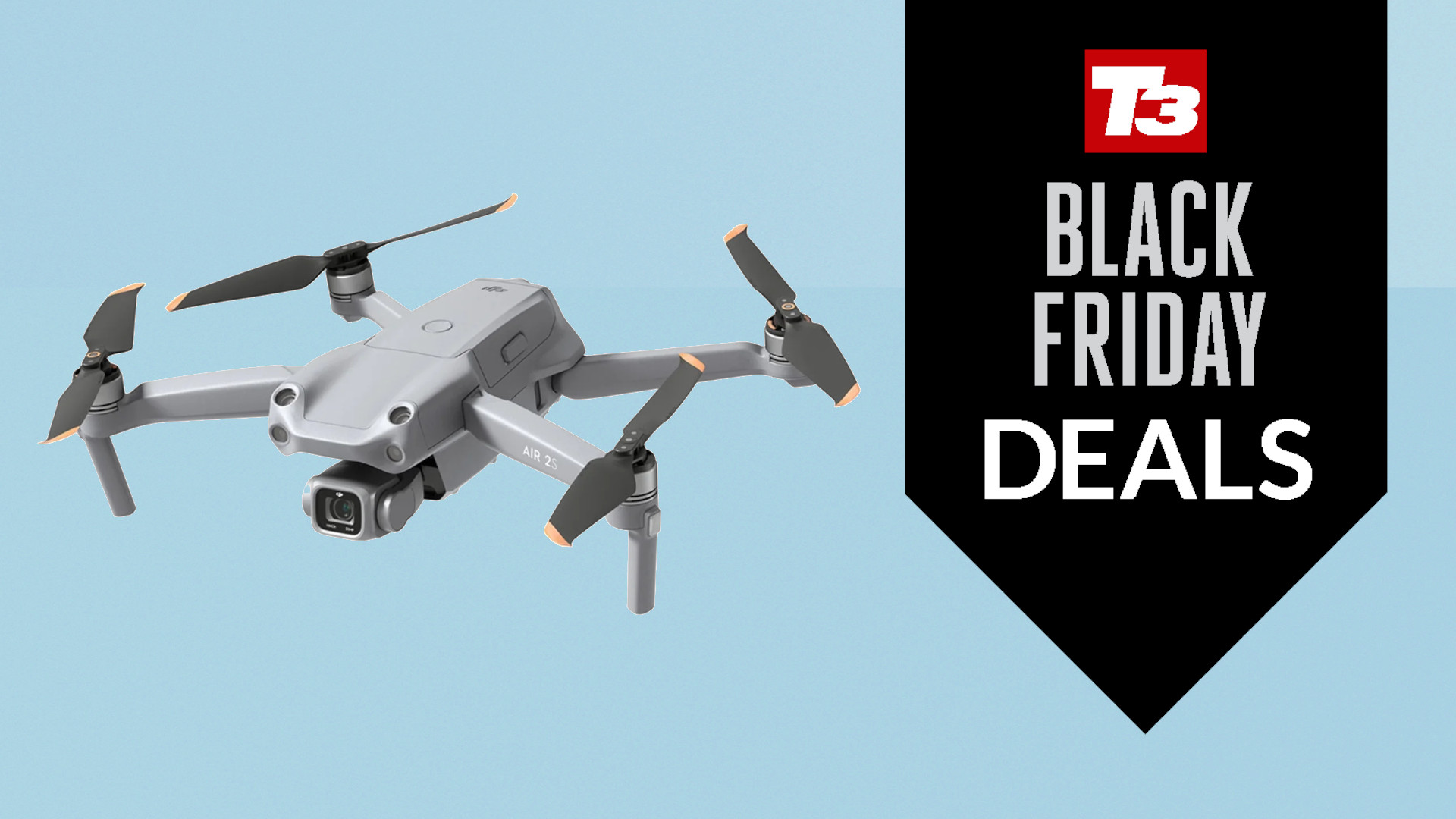 Quick! This 5-star DJI drone has $200 knocked off in Walmart’s Black Friday sale
Quick! This 5-star DJI drone has $200 knocked off in Walmart’s Black Friday saleThe AIR 2S Aerial is the ultimate camera drone
By Bryony Firth-Bernard Published
-
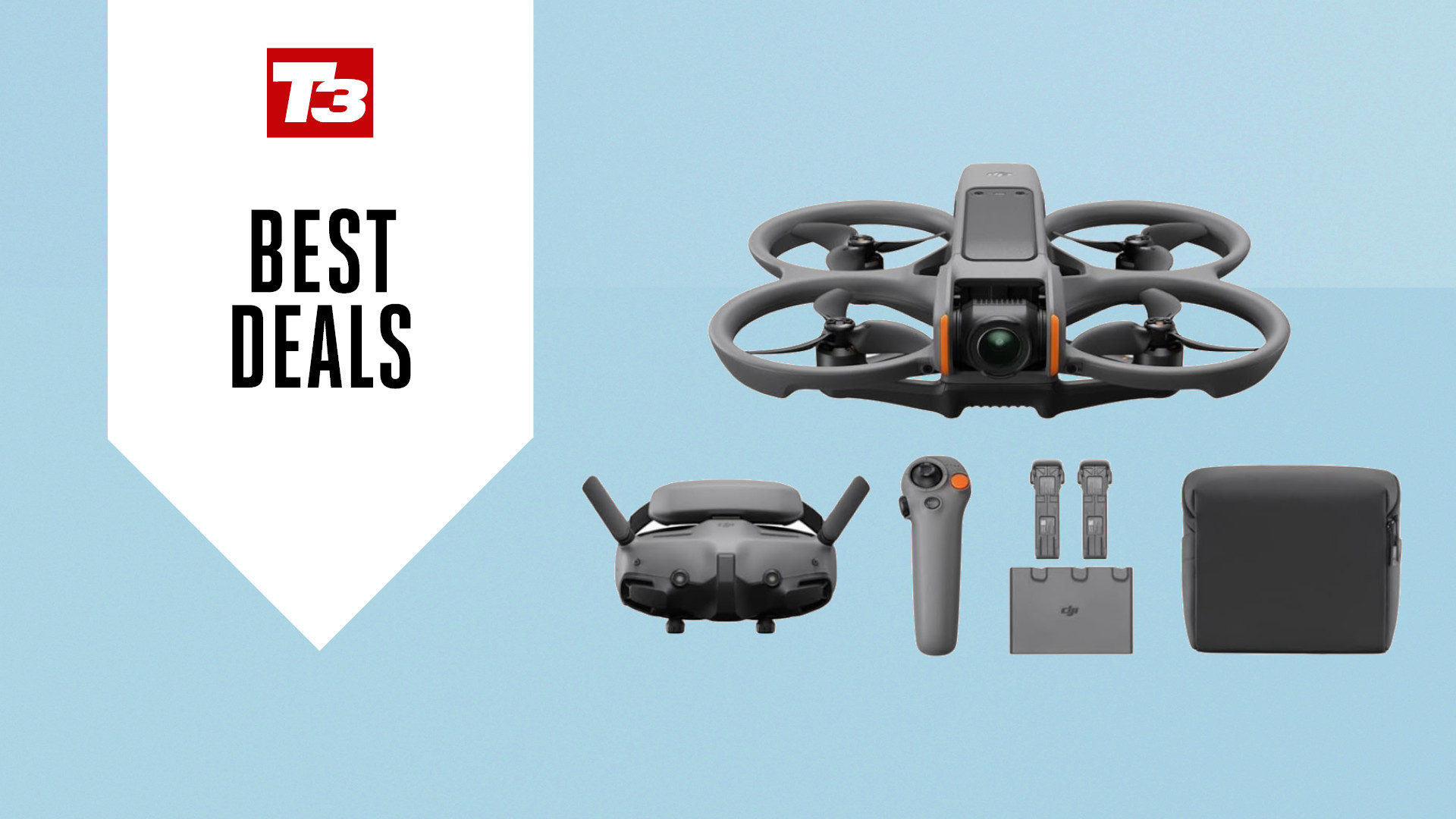 This DJI drone bundle has a (very) pretty pricetag in early Prime Day deal
This DJI drone bundle has a (very) pretty pricetag in early Prime Day dealIt's the cheapest it's ever been!
By Bryony Firth-Bernard Published
-
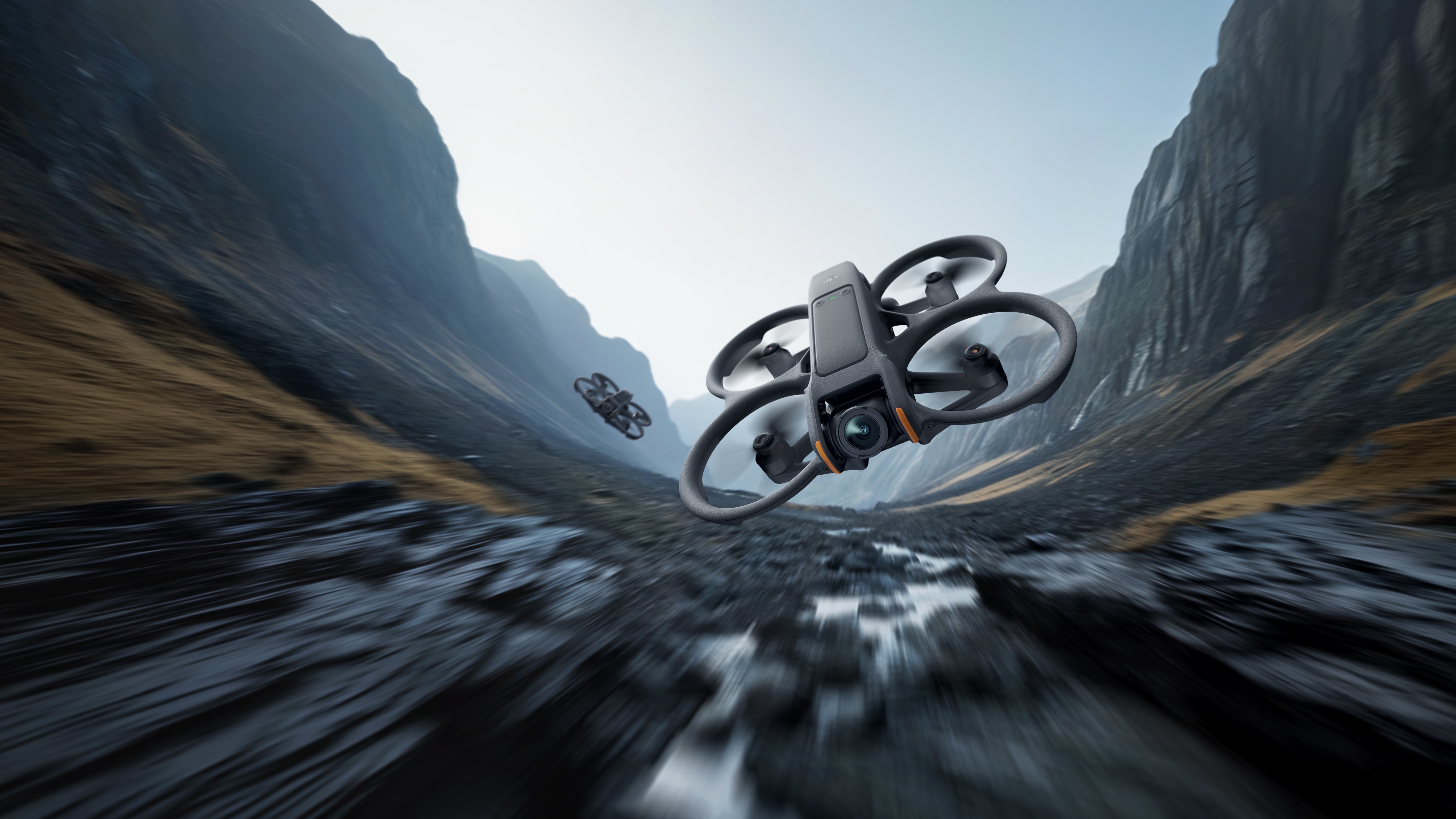
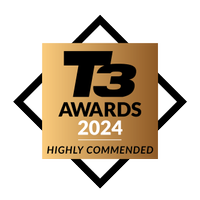 DJI Avata 2 review: Next-level FPV flying for beginners
DJI Avata 2 review: Next-level FPV flying for beginnersStrap on your goggles and prepare for one of the most immersive experiences since Meta Quest
By Derek Adams Published
-
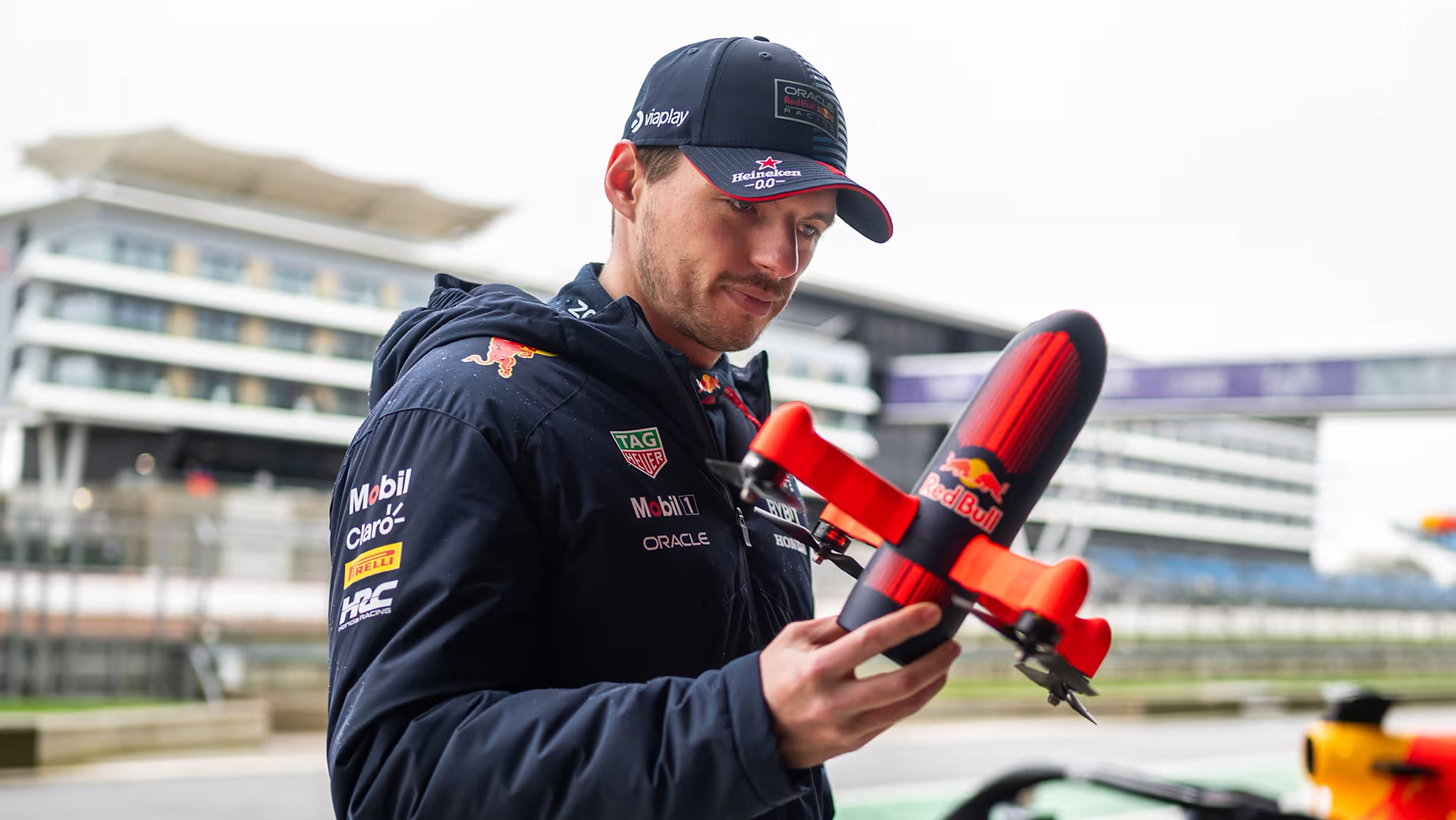 Can a drone keep up with an F1 car? This one can
Can a drone keep up with an F1 car? This one canCustom-built drone built by the Dutch Drone Gods can reach speeds up to 350 km/h
By Matt Kollat Published
-
 DJI Mini 4 Pro vs DJI Mini 3 Pro: A worthy upgrade or more of the same?
DJI Mini 4 Pro vs DJI Mini 3 Pro: A worthy upgrade or more of the same?The Mini 4 Pro brings smart upgrades over the Mini 3 Pro, but are they enough to justify the upgrade? Here’s everything you need to know
By Derek Adams Last updated

